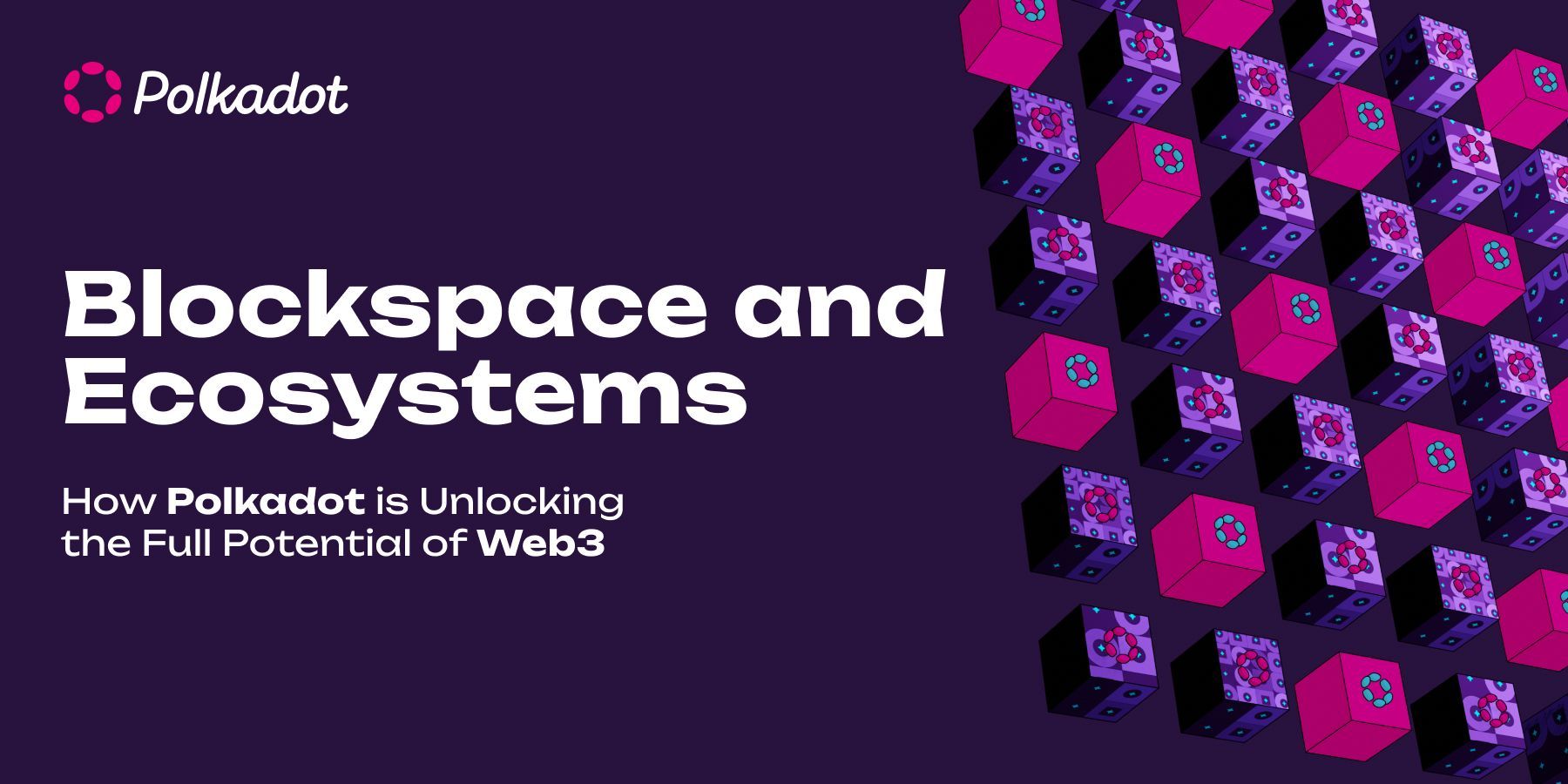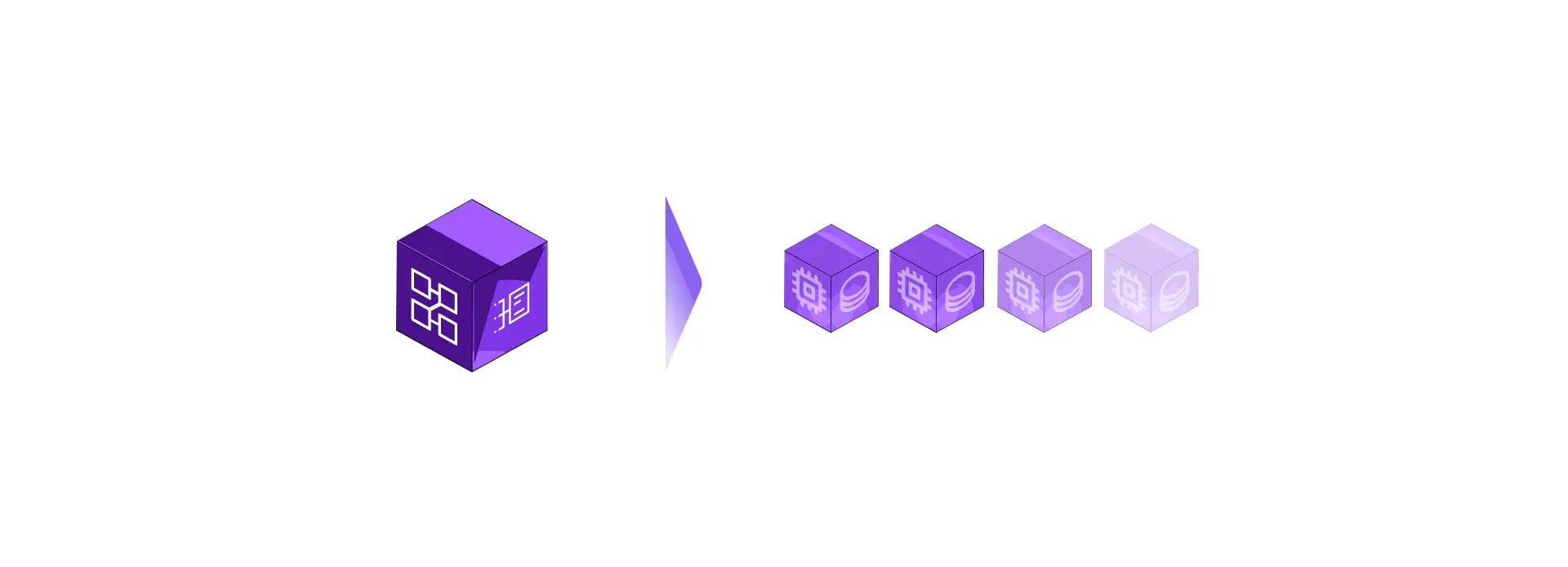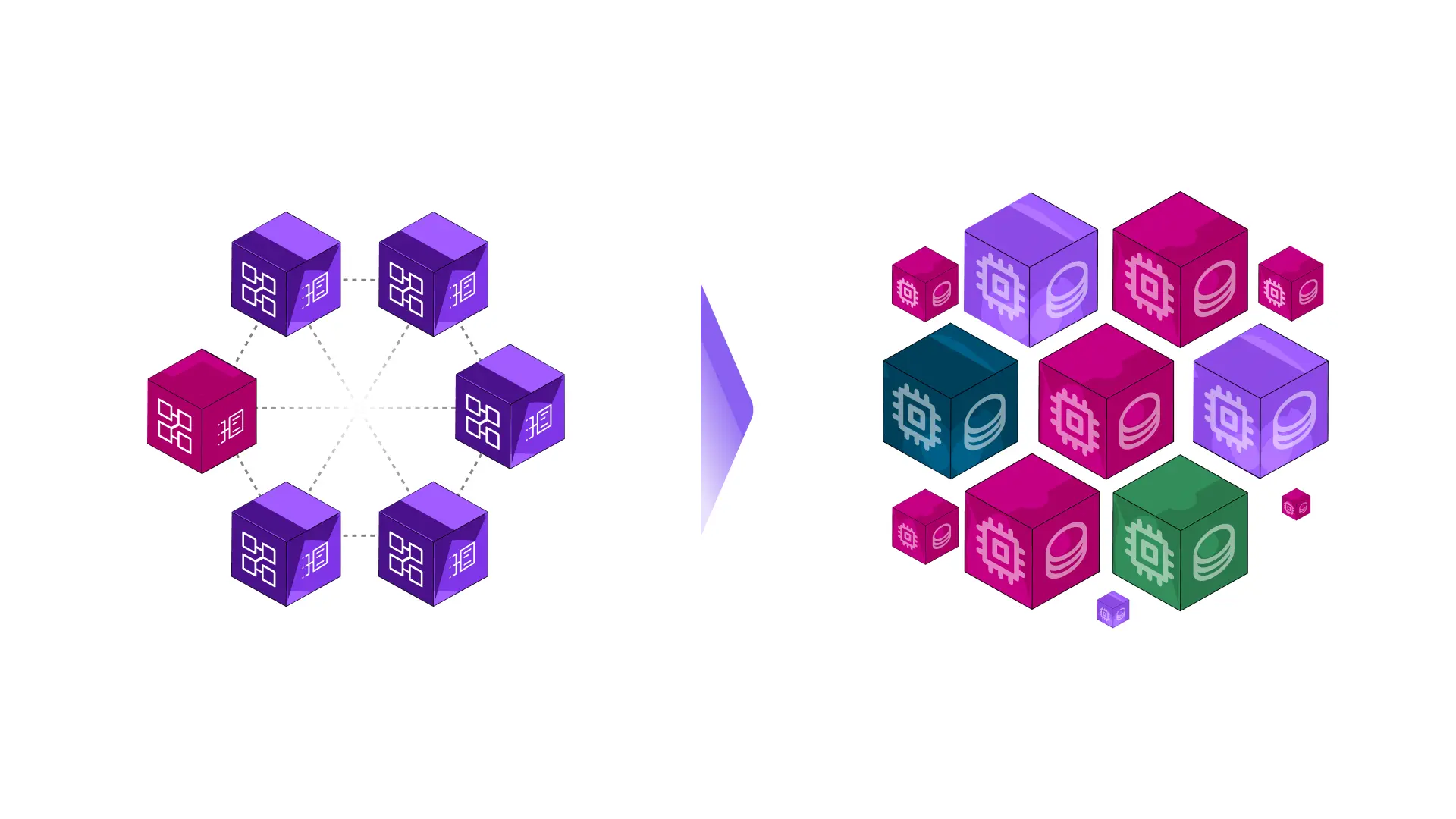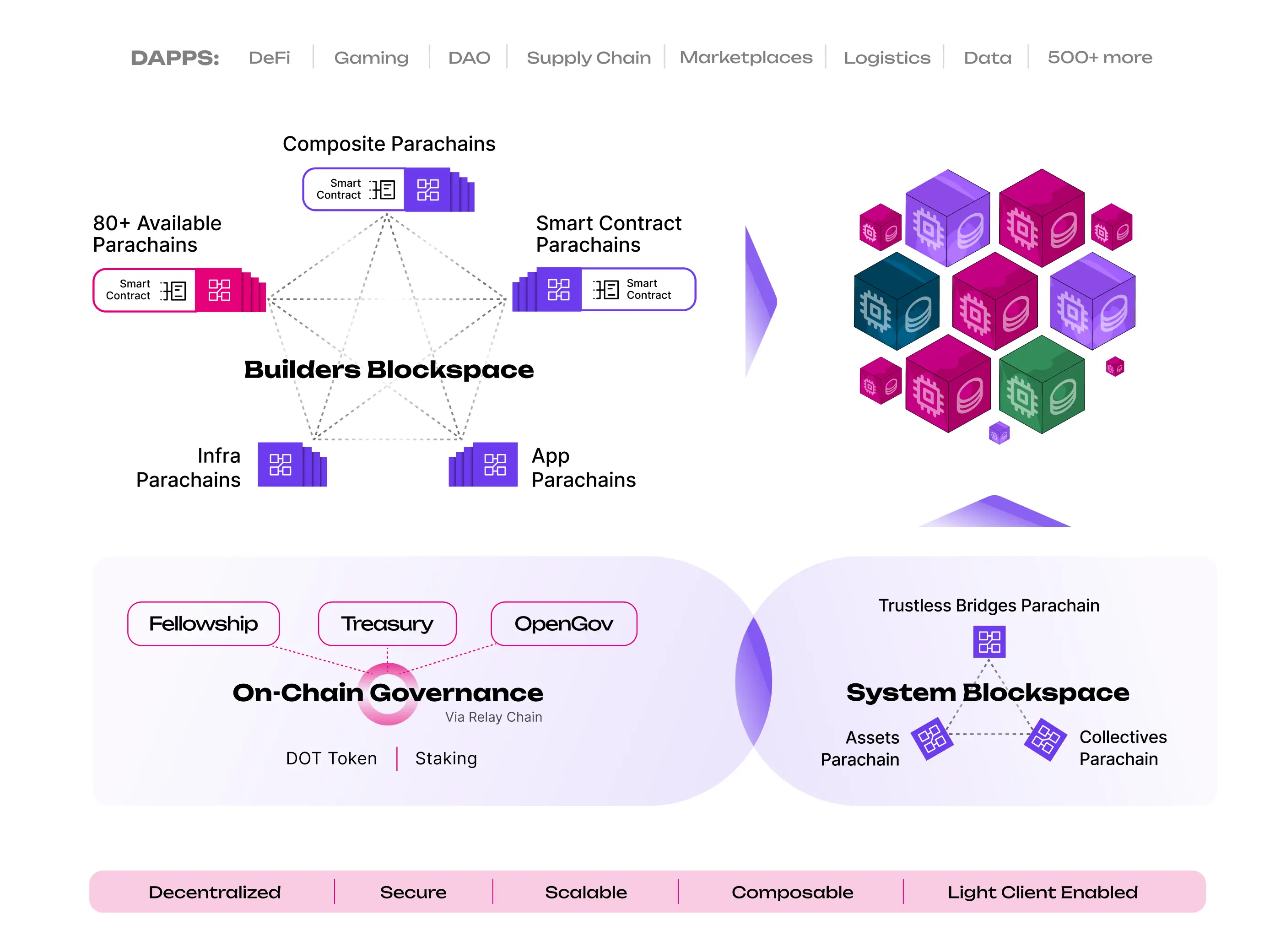Blockspace & Blockspace Ecosystems: How Polkadot is Unlocking the Full Potential of Web3
Introducing the concept of blockspace and blockspace ecosystems, the core attributes of blockspace, what makes a healthy blockspace ecosystem, and why Polkadot is the #1 blockspace ecosystem for boundless innovation.
 By Polkadot•June 26, 2023
By Polkadot•June 26, 2023
The concept of blockspace is an important one for understanding what blockchains and blockchain ecosystems offer the world. As blockchain technologies continue to evolve and mature, understanding blockspace and the various capabilities and limitations that characterize the blockspace offerings of different protocols will be a key driver of adoption and of reaching the full potential of the Web3 vision.
Blockspace is the product of a single blockchain. It describes the computing capacity and storage required to create a block, and it’s the most valuable capability of a blockchain because it delivers tangible value to users.
But not all blockspace is created equal. There are differences in the utility and quality of the blockspace offerings available today, as defined by core attributes such as security, availability, and flexibility.
It’s important to note that blockspace is the foundational product that blockchain technology provides for Web3. For Web3 to be successful, healthy blockspace ecosystems must consist of flexible blockspace that is composable, efficiently-allocated, cost effective, and built on the tenets of high security and availability of the underlying blockspace.
From the beginning, the vision of Polkadot was to create a scalable, heterogeneous multichain network. With that foundation firmly established following the network’s launch and the rollout of parachains, Polkadot has evolved into the most advanced blockspace ecosystem for Web3, providing developers with a broad range of fit-for-purpose blockspace offerings that are secure, composable, flexible, efficient and cost effective.
What is blockspace?
From a conceptual standpoint, blockspace is a virtual area where a blockchain’s code and data are executed. It is the space where all actions and information are processed.
This includes everything from validating and recording cryptocurrency transactions to executing smart contracts for decentralized finance (DeFi) applications. These can involve actions such as lending and borrowing, as well as storing data related to supply chain traceability, digital identities, or asset ownership on a blockchain.
Blockspace is different from traditional discrete Web2 resources such as storage, bandwidth, or computing power. Instead, blockspace is the combination of all three, but distributed over a decentralized network.

The core attributes of blockspace
Blockspace is characterized by three core attributes: security, availability, and flexibility. Here’s a closer look at what they mean:
Security: Security – including economic security – is the scarcest resource in blockchain, as independent blockspace producers often start with zero economic security and experience volatile swings in the early stages of building security. Blockspace should have security that isn’t susceptible to consensus faults or 51% attacks that could prevent new transactions or reverse historic transactions.
Availability: Blockspace should be available without experiencing long waiting times or facing uncertain or exorbitant costs. This can be achieved by efficiently allocating blockspace at scale. Ensuring the availability of blockspace facilitates smooth and seamless interactions within the decentralized ecosystem, supporting the scalability and widespread adoption of Web3 technologies.
Flexibility: Blockspace can vary in terms of flexibility, ranging from rigid blockspace built for a single purpose to flexible blockspace that can be fine-tuned by the consumer to their use case.
What is a blockspace ecosystem?
Blockspace from multiple blockchains can be combined to form a blockspace ecosystem characterized by the core attributes of its blockspace. A blockspace ecosystem is a secured and networked collection of individual blockspace producers (blockchains) offering fit-for-purpose, composable, efficiently-allocated, and cost-effective blockspace. Blockspace within an ecosystem can be assembled for end-user value through decentralized applications (dapps), smart contracts, or other blockchains.
One of the most valuable aspects of a blockspace ecosystem is the degree by which it’s defined by the connective tissue of shared security and composability. That means anyone building within the ecosystem (as a dapp developer or blockspace provider) will benefit from its established economic security, with the ability to compose blockspace from different producers to assemble applications from pre-built capabilities. This also enables them to focus development efforts on their differentiating features rather than spending time rebuilding existing capabilities.
For example, a supply chain traceability application could be made up of different types of blockspace from multiple producers in a single ecosystem. One blockspace could handle identity verification, one for asset tokenization, and another for source traceability – all combining to create a full application experience that’s fit for purpose.

What makes a healthy blockspace ecosystem?
Blockspace ecosystems are only as healthy as their weakest blockspace. This means that if an ecosystem contains weak, or unsecured, blockspace, it can end up risking the entire ecosystem’s economic stability, security, and performance – and in turn create poor user experiences, a slowdown in adoption, and spikes in prices for end users of applications built in the ecosystem.
These are the attributes that make up a healthy blockspace ecosystem:
Shared security: Security is the first key element of blockspace ecosystems’ connective tissue. And with security being so sought after in blockchain, the opportunity to join an established ecosystem of properly-implemented shared security is significant.
Composability: The second element of the connective tissue, composability enables different blockspace to seamlessly interact, share data, and be programmed across the ecosystem. This means developers can create advanced dapps with functionalities that leverage the purpose-optimized capabilities of different blockspace producers, going beyond simple asset transfers or message exchanges for true interoperability and optimal product development.
Flexibility: A healthy ecosystem should be made up of a mix of both rigid and flexible blockspace to allow developers to compose blockspace to fit different needs and use cases. Flexible blockspace can be used for a variety of purposes, whether it involves reactive transactions initiated by users themselves or autonomous processes that achieve a specific goal.
Efficient allocation: Blockspace should have an allocation engine that can respond to heavy load requests and congestion, and ensure blockspace is efficiently allocated to maximize transaction throughput. With efficient allocation, the ecosystem can create cost-efficiency at scale and deal with combinations of fixed, high, and low demand.
Cost effectiveness: Creating cost effectiveness in an ecosystem means basing the cost of blockspace on its actual need and building protection against spiking fees. If blockspace is accurately priced according to demand and capacity, an ecosystem can reduce the cost barriers to innovation, encourage experimentation, and ensure blockspace is available to a wider range of users and developers.
The health of a blockspace ecosystem is determined by a combination of all these attributes and the attributes of the blockspace that acts as its foundation. And when blockspace ecosystems are healthy, they have the potential to create new opportunities for developers and promote broader and more sustainable adoption of Web3.
Why do blockspace ecosystems matter?
Web3 has a bold mission to bring value to billions of users and give rise to a new, fairer global digital economy and supporting business models. Those models will embrace the values of decentralization, digital sovereignty, transparent governance with global participation, and fair and equitable treatment for all. Ultimately, Web3 business models will help meet the increasing demand for a web that respects users’ data rights.
An awareness of blockspace ecosystems and the attributes of blockspace they provide is a logical evolution for blockchain technology to create Web3 adoption at scale and help bring the value of blockchain closer to its end users.
A single blockchain cannot scale to meet the needs of truly global activity and provide the diversity of value that developers, businesses, and consumers require. Similarly, blockspace offerings based on a single blockchain can’t deliver the types of seamless user experiences current internet users have come to expect.
Advanced blockspace ecosystems like Polkadot, on the other hand, will provide these seamless experiences and offer the ability to scale when needed, with a model that enables developers to quickly build capacity as more users join Web3. Just as greater bandwidth helped to drive a transition from Web1 to Web2 – and how cloud computing models drove broad use cases and adoption for Web2 – blockspace and blockspace ecosystems are a step toward the same transition and adoption for Web3.
Polkadot as the blockspace ecosystem for boundless innovation
When the vision of creating "a heterogeneous multi-chain framework" as a path to achieve the goals of Web3 was first established in the original Polkadot whitepaper, the concepts of blockspace and blockspace ecosystems were embedded but not yet fully developed. However, the design decisions laid out in the Polkadot whitepaper set the standard for what makes a healthy blockspace ecosystem.

Polkadot’s Relay Chain architecture and shared security model, along with XCM (Cross-Consensus Messaging), have implemented the connective tissue of shared security and composability necessary for a healthy blockspace ecosystem.
The Relay Chain is at the heart of flexible blockspace production that provides the initial raw blockspace that a parachain can shape and mold for the purpose of its blockchain implementation. This means that parachains act as the blockspace production model for the ecosystem, whether they’re from independent builders – such as smart contract or app parachains – or the system itself, in forms like the Assets or Collectives parachains.
Flexible and efficient models of blockspace allocation are also provided by the parachain architecture which contains dedicated or bulk blockspace, as well as the upcoming on-demand model known as parathreads. Over time, both models will be able to be combined for a mixed model of blockspace allocation.
Polkadot’s blockspace ecosystem combines all of these elements to shape the foundations for fit-for-purpose blockspace that’s presented in a seamless and consistent way to dapp builders, all without them needing to understand the source.
This will enable a new era of boundless Web3 innovation by significantly easing developer experiences while helping to drive adoption through improved end-user experiences. The Polkadot blockspace ecosystem delivers the most flexible, efficient, and cost effective model in Web3, and can be tailored to the needs of businesses at every stage of growth on the path to adoption at scale.
By meeting the diverse requirements of developers, businesses, and end users, Polkadot’s blockspace ecosystem is enabling Web3 to reach its full potential. To this end, Polkadot is unlocking new use cases across industries and providing tangible value to end users beyond the killer apps of previous innovation cycles.
Get in touch with a Polkadot expert today to continue the conversation on Polkadot’s blockspace ecosystem.











